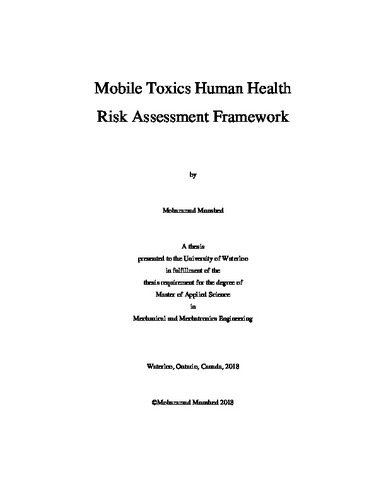| dc.description.abstract | Emissions from passenger cars, buses, commercial trucks, and motorcycles operated on highways, streets, and roads are major contributors to air pollution. Research led by the United States Environmental Protection Agency (U.S. EPA) identified more than 1000 air toxic compounds in exhaust and evaporative emissions from on-road mobile sources. Under a federal mandate, the U.S. EPA is obligated to regulate the emissions of 187 pollutants, known as Hazardous Air Pollutants (HAPs) or air toxics. HAPs emitted from mobile sources are called Mobile Source Air Toxics (MSATs). Compounds within a subgroup of these MSATs are identified by the U.S. EPA as being carcinogens. Additionally, MSATs cause noncancer serious health effects such as tumor formation, cardiovascular disease, damage to the immune system, neurological disorders, reproductive disorders, and respiratory problems.
The U.S. EPA estimates approximately half of the cancer risk from air toxics is attributed to mobile sources, whereas, 74 % of noncancer health impacts from air toxics are a result of exposure to emissions from mobile sources.
The quantification of these risk risks associated with MSATs remains limited to date. Only 20 of the MSATs have ambient air quality standards to protect human health. This work presents a novel and validated approach to quantify the myriad health risks associated with on-road mobile emissions. This approach is introduced in the form of a pipelined analysis process, which may be employed in existing and new road projects.
The result of this research is a new approach to provide regulators and risk analysts a more detailed awareness of the health impacts of these MSATs in current and future contexts.
A distinguished feature between this framework and conventional analysis is providing the handshake between the different models that generate the on-road mobile source emission inventories, conduct the air dispersion modeling, and run the risk engine to calculate the risk estimates. Furthermore, this framework will overcome existing limitations such as roadway geometry characterization in different models. | en |

